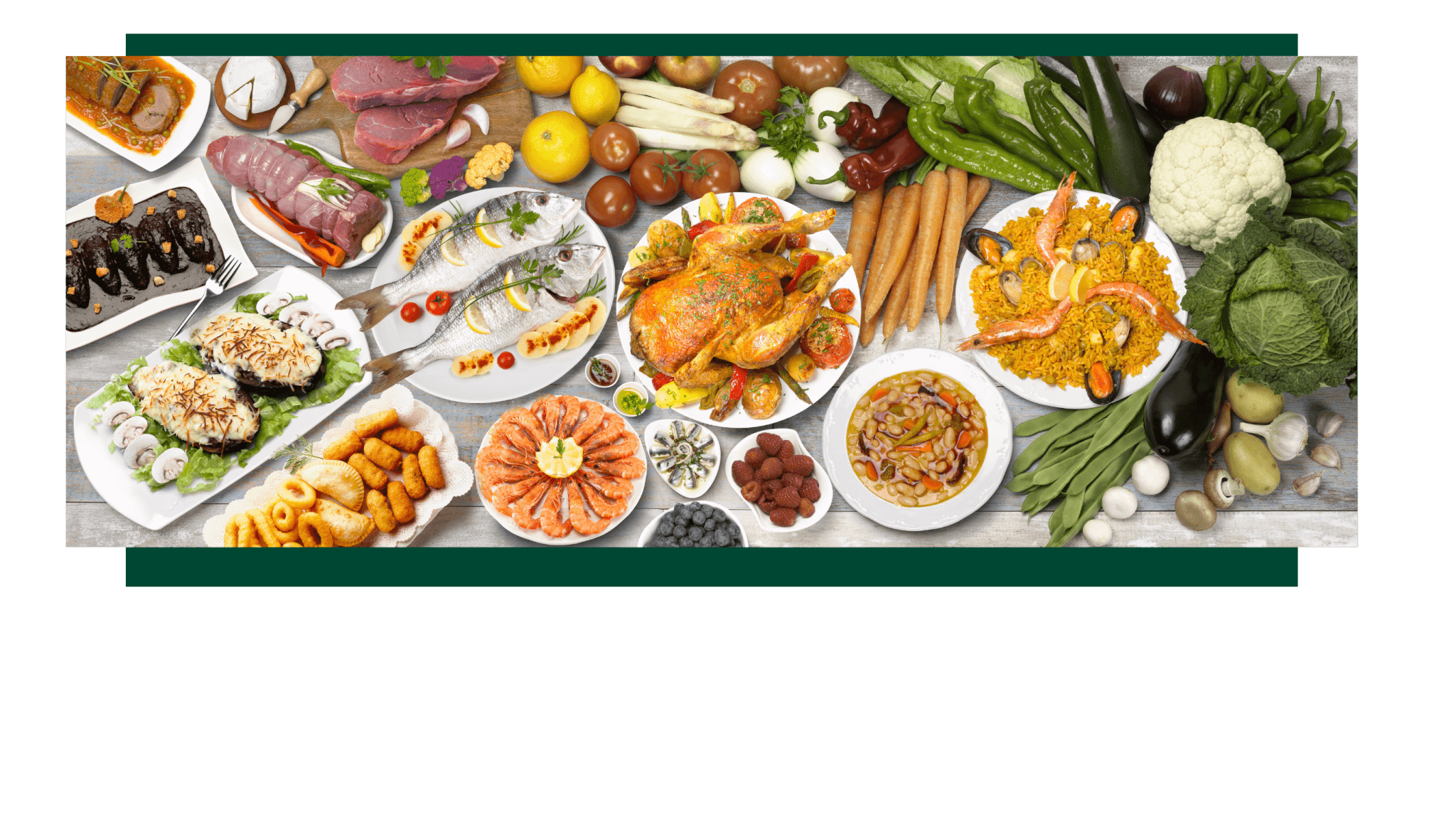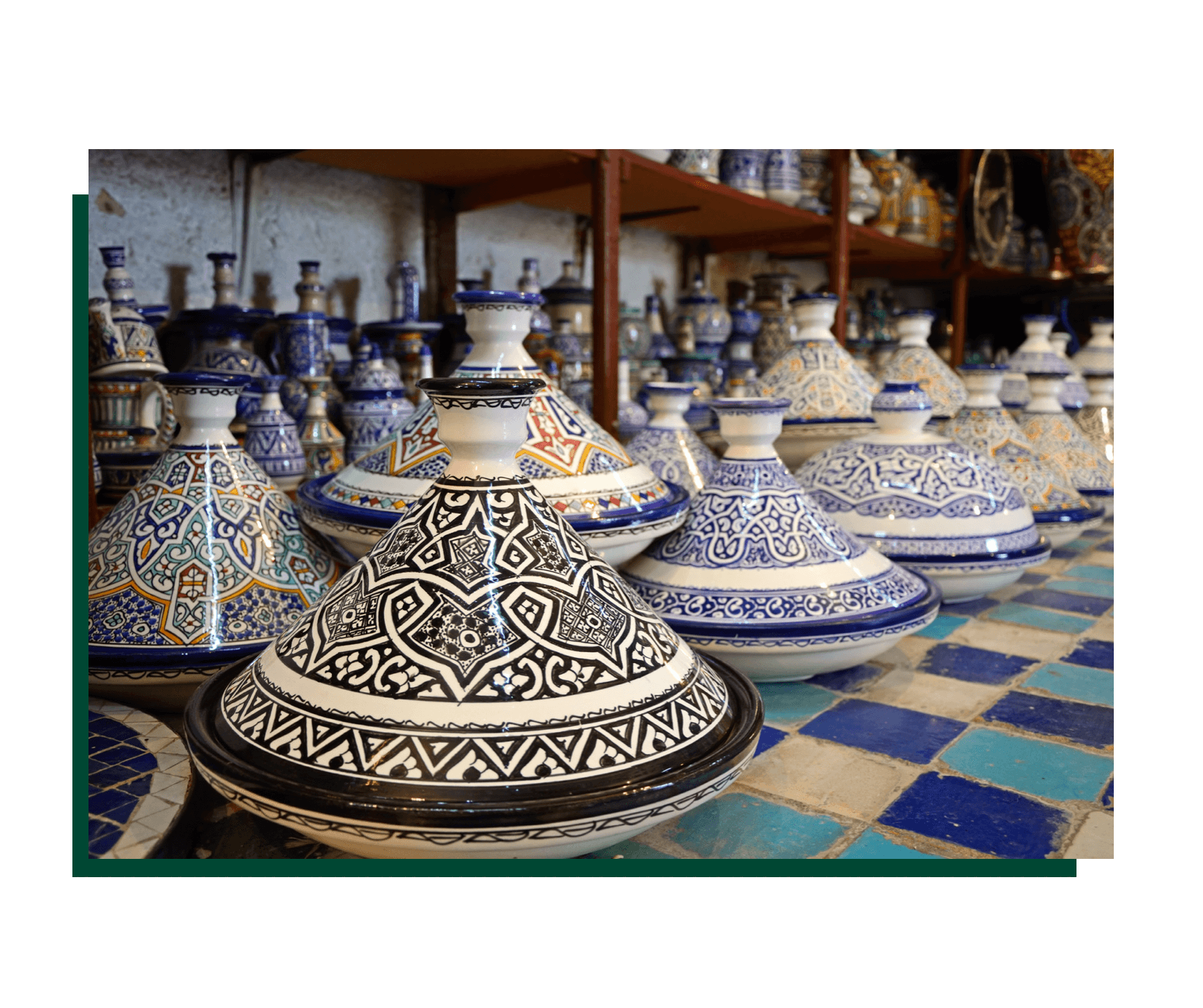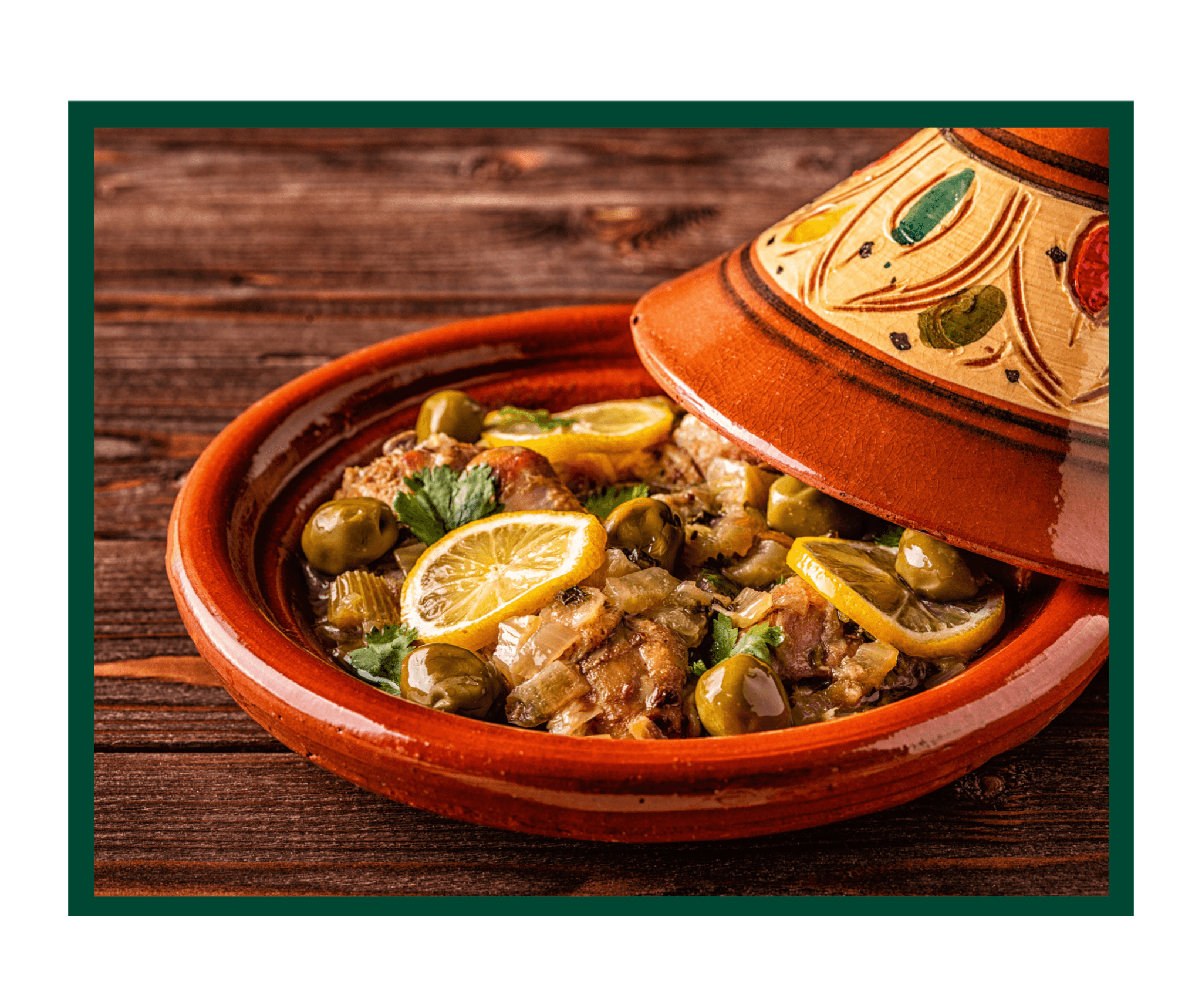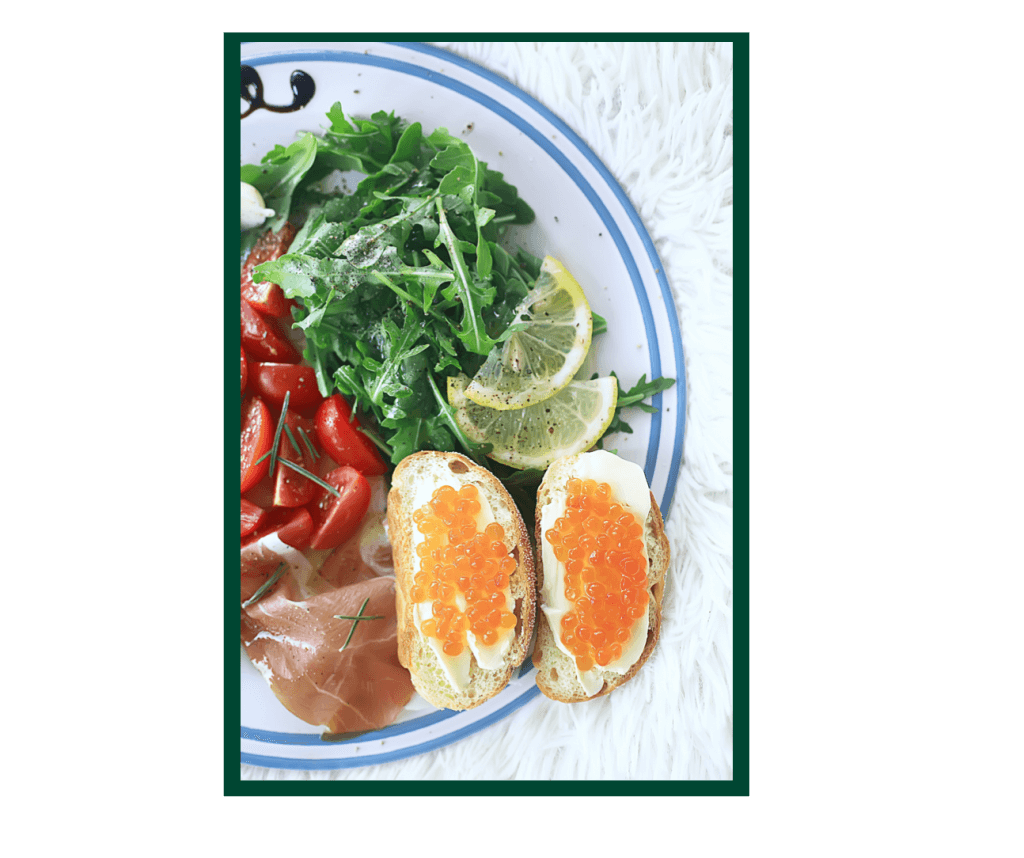Eating for Heart Health Starts Here

f you’re looking for a heart-healthy eating plan, the Mediterranean lifestyle might be right for you. This way of life includes eating blends the basics of healthy eating with the traditional flavors and cooking methods of the Mediterranean – and perfectly fits into the farm to freezer life. Rich in flavorful ingredients like fish, lean meats, fruits, vegetables, whole grains, lean meats, and heart-healthy fats, the Mediterranean diet is equal parts delicious and nutritious. It’s also associated with a variety of benefits and may help support brain function, promote heart health, regulate blood sugar levels, and more.
Promotes heart health
Research shows that the Mediterranean diet is linked to a lower risk of heart disease and stroke. It’s effective at slowing the progression of plaque buildup in the arteries, which is a major risk factor for heart disease, and helps lower levels of diastolic and systolic blood pressure to support heart health. In addition to the heart benefits, the diet has been shown to reduce the risk of cancer, diabetes, dementia, and obesity.
So exactly what makes the Mediterranean diet so heart-healthy? Healthy fats. They’re eaten instead of less healthy fats, such as saturated and trans fats, which contribute to heart disease. Olive oil is the primary source of added fat in the Mediterranean diet. Olive oil provides monounsaturated fat, which has been found to lower total cholesterol and low-density lipoprotein, also known as LDL or “bad” cholesterol, levels. Nuts and seeds also contain monounsaturated fat.
f you’re looking for a heart-healthy eating plan, the Mediterranean lifestyle might be right for you. This way of life includes eating blends the basics of healthy eating with the traditional flavors and cooking methods of the Mediterranean – and perfectly fits into the farm to freezer life. Rich in flavorful ingredients like fish, lean meats, fruits, vegetables, whole grains, lean meats, and heart-healthy fats, the Mediterranean diet is equal parts delicious and nutritious. It’s also associated with a variety of benefits and may help support brain function, promote heart health, regulate blood sugar levels, and more.
Promotes heart health
Research shows that the Mediterranean diet is linked to a lower risk of heart disease and stroke. It’s effective at slowing the progression of plaque buildup in the arteries, which is a major risk factor for heart disease, and helps lower levels of diastolic and systolic blood pressure to support heart health. In addition to the heart benefits, the diet has been shown to reduce the risk of cancer, diabetes, dementia, and obesity.
So exactly what makes the Mediterranean diet so heart-healthy? Healthy fats. They’re eaten instead of less healthy fats, such as saturated and trans fats, which contribute to heart disease. Olive oil is the primary source of added fat in the Mediterranean diet. Olive oil provides monounsaturated fat, which has been found to lower total cholesterol and low-density lipoprotein, also known as LDL or “bad” cholesterol, levels. Nuts and seeds also contain monounsaturated fat.
What does a Mediterranean diet look like?
The Mediterranean diet is more than a “diet,” it’s a lifestyle based on the traditional cuisines of countries bordering the Mediterranean Sea. It also typically includes plenty of fruits, vegetables, bread and other grains; potatoes, beans, nuts, and seeds; olive oil as a primary fat source; and low to moderate amounts of dairy products, eggs, fish, and poultry. Fish and poultry are more common than red meat in this diet. Fruit is a common dessert instead of sweets.
Spice Rack:
Common spices and herbs used in the Mediterranean include basil, bay leaf, black pepper, cloves, coriander, cumin, dill, fennel, garlic, lavender, marjoram, mint, oregano, parsley, paprika, rosemary, saffron, sage, savory, sumac, tarragon, thyme, and turmeric.
Try something new: Looking to add a little kick of flavor to your breakfast? Sprinkle a bit of sumac over your fruit. The taste of the bright red spice sumac resembles that of a tart lemon.
We’ve created these tips to help you get started:
- Eat more organic fruits and vegetables: Aim for seven to 10 servings per day of fruit and vegetables.
- Opt for whole grains.
- Switch to whole-grain bread, cereal and pasta. Experiment with other whole grains, suchas bulgur and farro.
- Use healthy fats. Try olive oil as a replacement for butter when cooking. Instead ofputting butter or margarine on bread, try dipping it in flavored olive oil.
- Eat more seafood such as our lobster which is packed with heart healthy fats.
- Eat fish twice a week. Yellowfin tuna, salmon, swordfish, and trout. Grilled fish tastesgood and requires little cleanup. Avoid deep-fried fish.
- Choose healthy poultry such as our Chicken Breasts and turkey breasts.
- Eat low-fat Greek or plain yogurt and small amounts of a variety of cheeses.
- Herbs and spices such as cumin, coriander, paprika, boost flavor and lessen the need forsalt.
- Increase and focus on family dinners.

How can Heartland help support your Mediterranean Diet?
As the leading farm-to-freezer home delivery company, we can provide a wide selection of poultry, fish, lean meats, and organic produce, ensuring that you always have a freezer full of the foods you need to support the Mediterranean diet. Most importantly, it is our mission to provide all-natural, hormone-free, antibiotic-free meats; wild-caught, sustainable seafood; and field-grown, organic fruits and veggies, harvested at the peak of perfection, all of which are then flash-frozen, delivered, and stocked in your freezer, ready to feed you and your family. As a result, you not only get the foods you want but also the quality you deserve.
Fish is the most important part of the Mediterranean diet. Fatty fish, such as our wild-caught fish Cobia, salmon, swordfish, tuna, and pollock, are all rich in omega-3 fatty acids, a type of polyunsaturated fat that may reduce inflammation in the body. Omega-3 fatty acids also help decrease triglycerides, reduce blood clotting, and decrease the risk of stroke and heart failure. We are proud to be able to offer you fish that is not only fresh frozen but also a part of our long-term social, economic, and environmental sustainability mission.

Chicken Tagine w/ apricots, raisins and almonds ~
The dish has so much going on—the fragrant and heavily-spiced sauce, the jammy apricots, the crunchy almond – it’s easily understood why this is a well-loved Moroccan dish. Chicken tagine is a lazy Sunday kind of meal. It also makes terrific leftovers, so it’s worth making this for the meals it will give you all week long.
Tagine is the name for both the North African dish and the vessel in which it’s prepared. The Tagine’s conical shape means condensation drips down the sides back into whatever’s cooking in the pan, so your food is extra tender, juicy, and flavorful, every time! Dating back centuries, the Tagine is a uniquely shaped lid, which allows steam to circulate during cooking, creating rich, layered flavors. If you don’t own a Tagine, don’t fret. You can use a Dutch oven.


Ingredients
Spice-rub:
1 teaspoon kosher salt
1 teaspoon harissa dry spice
1 teaspoon ground cumin
1 teaspoon ground turmeric
1 teaspoon ground cinnamon
2 tablespoons cilantro
Ingredients Continued…
Tagine:
1 tablespoon Olive oil
4 Murray’s Chicken drumsticks
4 Murray’s Chicken thighs
1 yellow onion, halved and sliced thinly
4 carrots, peeled and diced
2 cloves garlic, minced
1-inch piece ginger root, peeled and minced
1 teaspoon coriander
1 teaspoon cumin
1 teaspoon cinnamon
11⁄2 cups chicken stock
1 cup dried couscous
2⁄3 cup dried apricots, roughly chopped
2 tablespoon honey
1⁄4 cup golden raisins
2 tablespoons tomato paste
1/4 cup almonds, roughly chopped
2 tablespoons lemon juice
1 15-oz can chickpeas, drained and rinsed

Directions
- Combine spice rub ingredients in a medium bowl.
- With hands, rub mixture all over chicken, thoroughly covering all surfaces. Use all of the rub.
- Warm two tablespoons of oil in a large Dutch oven (at least 5 1/2-quarts) or tagine over
- medium-high heat.
- Add chicken and cook until lightly browned on all sides; about 3-4 minutes on each side. Remove
- to a plate and let rest.
- Pour off all but a teaspoon of oil and return the pan to medium heat. add sliced onions, reduce
- heat to medium and cook, stirring occasionally, until they are tender and just beginning to
- brown; about 10 minutes.
- Stir in the garlic and cook until fragrant, about 30 seconds. Sprinkle the ginger and spices over
- top and cook until fragrant, another two minutes.
- Transfer the prepared onions to a bowl and set aside.
- Arrange browned chicken into the bottom of tagine, then layer on top (in order): carrots,
- chopped apricots, chickpeas, raisins, and prepared onions.
- Whisk together chicken broth, honey, tomato paste, lemon juice, cumin, cinnamon, and harissa
- in a medium bowl.
- Pour broth mixture evenly over the top of your little chicken mountain.
- Bring the liquid to a boil, then reduce the heat to low and continue to simmer.. Cover the pan and cook for 50-60 minutes. The tagine is ready when the chicken registers 165° on an instant-read thermometer in the thickest part of the meat and when its juices run clear.
- While the chicken is cooking, prepare the couscous and set aside..
- Now that the tagine is done. Remove lid, fold in half of the fresh cilantro, and allow to cool for 15
- minutes so that the cilantro infuses into the dish and the juices thicken a bit.
- To serve, spread the cooked couscous on a serving platter and arrange the chicken pieces on top.
- Ladle the stew over top, making sure the chicken pieces each get a good coating. Sprinkle with remaining cilantro and serve with warm bread.
This 15-minute Mediterranean salmon recipe features flaky, tender, flavorful salmon topped with a rainbow of toppings. Baked in the oven for a healthy, delicious and gorgeous meal elegant enough to serve at any dinner party. We’ve packed it with some classic Mediterranean ingredients like fresh herbs, garlic, and lemon juice. Talk about quick and easy! It’s the perfect recipe to add to your healthy weeknight dinner rotation, especially if you are looking to incorporate more seafood into your diet. It’s a total crowd pleaser, and it’s the perfect meal when you are craving something fresh and light.


Ingredients
SALMON:
4 Heartland Foods salmon fillets
2 teaspoons dried oregano
2 teaspoons dried thyme
1 teaspoon cracked black pepper
1 teaspoon ground coriander
1 teaspoon ground cumin
2 teaspoons smoked paprika
3 garlic cloves, minced
3 tablespoons Extra virgin olive oil + more for skillet tablespoons lemon juice
1 1/2 tsp fine sea salt or kosher salt
Ingredients Continued…
MEDITERRANEAN TOPPING:
1 cup halved cherry tomatoes
2⁄3 cup green ripe olives, pitted and halved
1⁄2 English cucumber, diced
1⁄4 cup fresh chopped parsley
1⁄2 cup crumbled feta cheese
Olive oil
Sea or Kosher salt
Cracked black pepper

Instructions
- Preheat the oven to 425 F.
- In a medium bowl, mix together the oregano, thyme, coriander, cumin, smoked paprika, garlic, olive oil and lemon juice. Spread evenly over the fillets.
- Line a sheet pan with parchment paper and arrange fillets evenly. Bake salmon for 12-14 minutes, or until it flakes off easily with a fork.
- While salmon is cooking, add cherry tomatoes, green ripe olives, cucumber, parsley, feta cheese, a drizzle of olive oil and season to taste with kosher salt and cracked black pepper.
- Mix together and set aside to top salmon.
- Transfer salmon to a serving platter and top evenly with Mediterranean topping.



